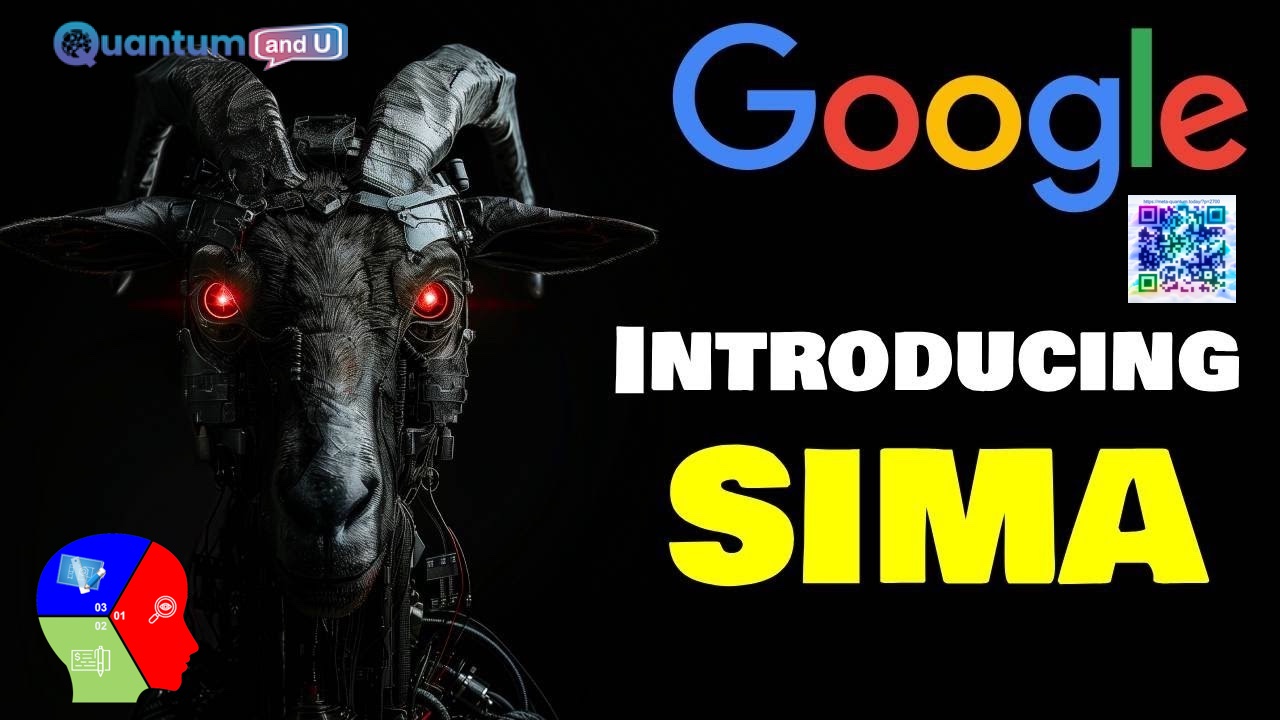
Introduction:
In the realm of AI advancements, Google DeepMind has introduced SIMA, a generalist AI agent designed for 3D virtual environments, essentially video games. This agent demonstrates a significant leap towards achieving ‘human-like’ play in gaming, marking a pivotal moment in AI development.
Google DeepMind’s SIMA, which stands for Scalable Instructable Multiworld Agent, is an AI model designed to navigate and perform tasks in various 3D video games. Here’s what makes SIMA special:
- Human-like Learning: Unlike traditional AI game bots that rely on game-specific coding, SIMA learns through natural language instructions and image recognition. You can tell it to “jump” or “open the door” and it will figure out how to do it within the game environment.
- Adaptability: SIMA isn’t limited to one game. It can be trained on different 3D video games, allowing it to generalize its knowledge and apply it across various situations.
- Simple Interface: SIMA only needs two things to function: what it sees on the screen and instructions in plain English. This makes it potentially compatible with any virtual environment, not just games.
Currently, SIMA is being evaluated on basic skills like navigation and object interaction. The goal is for it to eventually tackle more complex tasks that require planning and strategy.
Here are some potential applications of SIMA’s technology:
- AI teammates in games: Imagine having an AI companion that can follow your instructions and help you achieve goals within the game.
- Training robots in simulation: By learning from video games, robots could be trained in simulated environments to prepare them for real-world tasks.
- Creating more interactive virtual worlds: AI like SIMA could play a role in designing virtual spaces that respond more naturally to user input.
Overall, SIMA represents a significant step forward in developing AI that can interact with and learn from complex 3D environments. It has the potential to revolutionize the way we experience and interact with virtual worlds.
Video about SIMA:
Related Video Sections:
- The Quest for a Multi-World Agent: Both Nvidia and Google DeepMind are pursuing the concept of a versatile AI agent capable of excelling across various domains, including different video games. The objective is to create an agent that can seamlessly transition skills learned in virtual environments to real-world applications, such as piloting robots.
- Understanding Environments and Data in AI Training: Environments, whether virtual or physical, serve as training grounds for AI agents. Data, akin to experience points for humans, fuels their learning. With human-generated data reaching its limits, the focus shifts towards synthetic data generated within simulations or games, paving the way for more efficient AI training.
- Challenges of Generalization and Real-Time Interaction: DeepMind’s SIMA operates in real-time, receiving image observations and language instructions as inputs and executing keyboard and mouse actions as outputs, mimicking human gameplay. This approach presents challenges but allows for grounding language across diverse and complex environments.
- The Role of Language in AI Instruction: Open-ended language instructions enable SIMA to navigate various tasks, from driving cars to performing complex actions in games like Goat Simulator 3. Language models are trained on gameplay data, mapping observations to actions, facilitating the agent’s understanding and execution of commands.
- Evaluation and Performance: SIMA’s performance varies across different games, achieving varying success rates in tasks ranging from driving vehicles to combat. While not perfect, its capabilities mirror human-like proficiency, albeit with room for improvement.
Impact to SEA and market opportunities:
While the specific impact on Southeast Asia is yet to be seen, how SIMA’s technology could potentially influence the region and the market opportunities it presents:
Positive Impact:
- Boosting Gaming Industry: Southeast Asia has a thriving gaming industry. SIMA could be used to develop more engaging AI companions within games, attracting a wider audience and potentially increasing revenue for gaming companies in the region.
- Advancement in Robotics: SIMA’s ability to learn from simulated environments could be valuable for training robots for tasks relevant to Southeast Asia, such as agriculture, logistics, or even disaster response.
- Virtual Education and Training: The technology behind SIMA could be adapted for educational purposes, creating interactive simulations for various fields or language learning.
Market Opportunities:
- Game Developers: SIMA’s technology could be licensed to game developers in Southeast Asia to create more immersive and interactive games.
- Educational Software Developers: There’s a potential market for educational software companies in Southeast Asia to utilize SIMA-like AI for simulations and virtual training.
- Robotics Companies: Collaboration between AI researchers and robotics companies in Southeast Asia could lead to the development of robots trained using SIMA’s approach.
Challenges:
- Infrastructure: Large-scale adoption of AI like SIMA might require significant computing power, which could be a challenge for some parts of Southeast Asia.
- Data Privacy: The reliance on visual information for training SIMA raises data privacy concerns that need to be addressed.
Conclusion:
Google DeepMind’s SIMA signifies a substantial stride towards attaining ‘human-like’ play in AI gaming agents. It’s noteworthy for its ability to generalize skills across varied environments and interact in real-time, representing a significant advancement in AI research. Despite remaining challenges, the potential for applications beyond gaming, such as autonomous robotics, is noteworthy.
In summary, SIMA’s technology holds the capacity to bring considerable advancements in the gaming industry, robotics, and virtual education in Southeast Asia. Nevertheless, addressing infrastructure limitations and safeguarding data privacy are essential for successful execution.
Key Takeaway Points:
- SIMA demonstrates remarkable proficiency in navigating diverse gaming environments.
- Synthetic data generation becomes crucial for training AI agents in the absence of sufficient human-generated data.
- Real-time interaction and open-ended language instructions enable SIMA to mimic human-like gameplay.
- SIMA’s performance, while not flawless, showcases potential for broader applications in robotics and beyond.
References:


